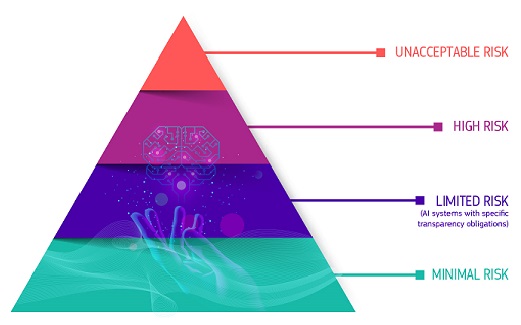EU Releases Guidelines on Prohibited AI Practices

# EU Releases Guidelines on Prohibited AI Practices
The European Union (EU) has taken a significant step toward regulating artificial intelligence (AI) by releasing new guidelines on prohibited AI practices. These guidelines are part of the broader **EU AI Act**, which aims to ensure that AI technologies are developed and used in a way that aligns with fundamental rights, safety, and ethical principles.
## **Background of the EU AI Act**
The **EU AI Act** is the first comprehensive legal framework for AI regulation in the world. It categorizes AI systems based on their risk levels—**unacceptable risk, high risk, limited risk, and minimal risk**—and imposes different regulatory requirements accordingly. AI systems that pose an **unacceptable risk** are strictly prohibited under the new guidelines.
## **Key Prohibited AI Practices**
The EU has identified several AI applications that are considered too dangerous for public use. These include:
### **1. AI Systems That Manipulate Human Behavior**
AI technologies designed to **subliminally manipulate individuals** or exploit their vulnerabilities (such as age, disability, or socioeconomic status) are banned. These systems can influence people’s decisions in ways they are unaware of, leading to potential harm.
### **2. Social Scoring Systems**
Inspired by China’s social credit system, the EU has prohibited AI systems that assign individuals a **social score** based on their behavior, economic status, or personal characteristics. Such systems could lead to discrimination and unfair treatment in areas like employment, education, and public services.
### **3. Biometric Identification in Public Spaces**
The use of **real-time biometric identification systems** (such as facial recognition) in public spaces by law enforcement is largely prohibited, except in specific cases related to national security or serious crimes. This measure aims to protect citizens’ privacy and prevent mass surveillance.
### **4. Predictive Policing Based on Profiling**
AI systems that predict criminal behavior based solely on profiling or past data patterns are banned. These systems can reinforce biases and lead to discriminatory law enforcement practices.
### **5. Emotion Recognition in Workplace and Education**
AI technologies that assess emotions in workplaces or schools are prohibited. Such systems could lead to **invasive monitoring** and unfair treatment of employees or students based on their emotional states.
### **6. AI That Exploits Children’s Vulnerabilities**
Any AI system that manipulates or exploits children’s emotions, behaviors, or decision-making in a harmful way is banned. This includes AI-driven toys or applications that pressure children into making purchases or engaging in risky activities.
## **Implications for Businesses and Developers**
The new guidelines mean that **AI developers and businesses** operating in the EU must carefully assess their AI systems to ensure compliance. Companies found violating these prohibitions may face **hefty fines** and legal consequences.
To comply with the regulations, businesses should:
– Conduct **risk assessments** of AI systems before deployment.
– Implement **transparency measures** to ensure AI decisions are explainable.
– Avoid using AI in ways that could lead to **discrimination or mass surveillance**.
## **Conclusion**
The EU’s guidelines on prohibited AI practices mark a major milestone in global AI regulation. By banning AI systems that pose **unacceptable risks**, the EU aims to protect fundamental rights, prevent discrimination, and ensure AI is used ethically. As AI technology continues to evolve, these regulations will likely serve as a **model for other countries** looking to establish their own AI governance frameworks.
For businesses and developers, staying informed about these regulations is crucial to ensuring compliance and fostering **trustworthy AI innovation**.